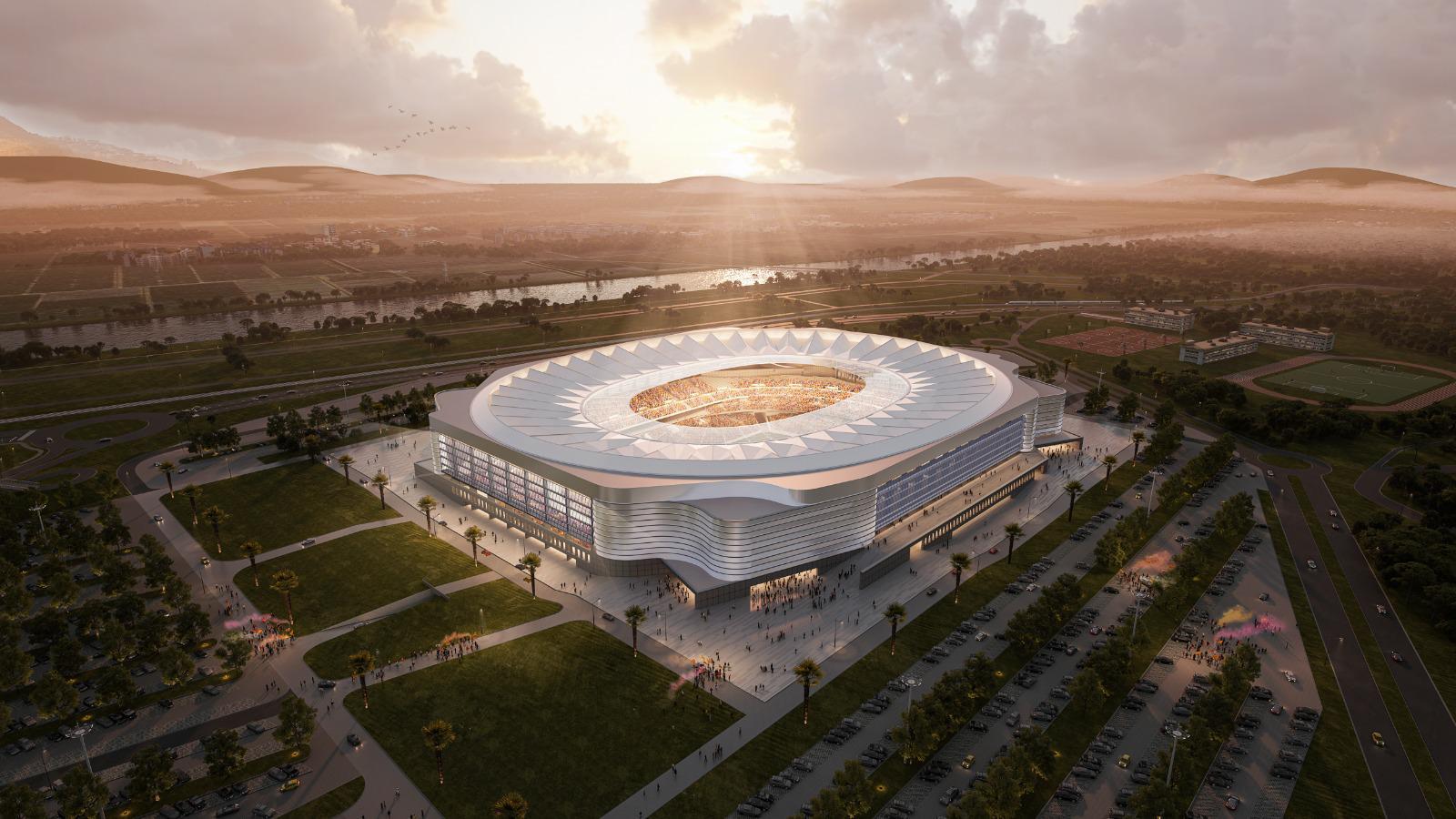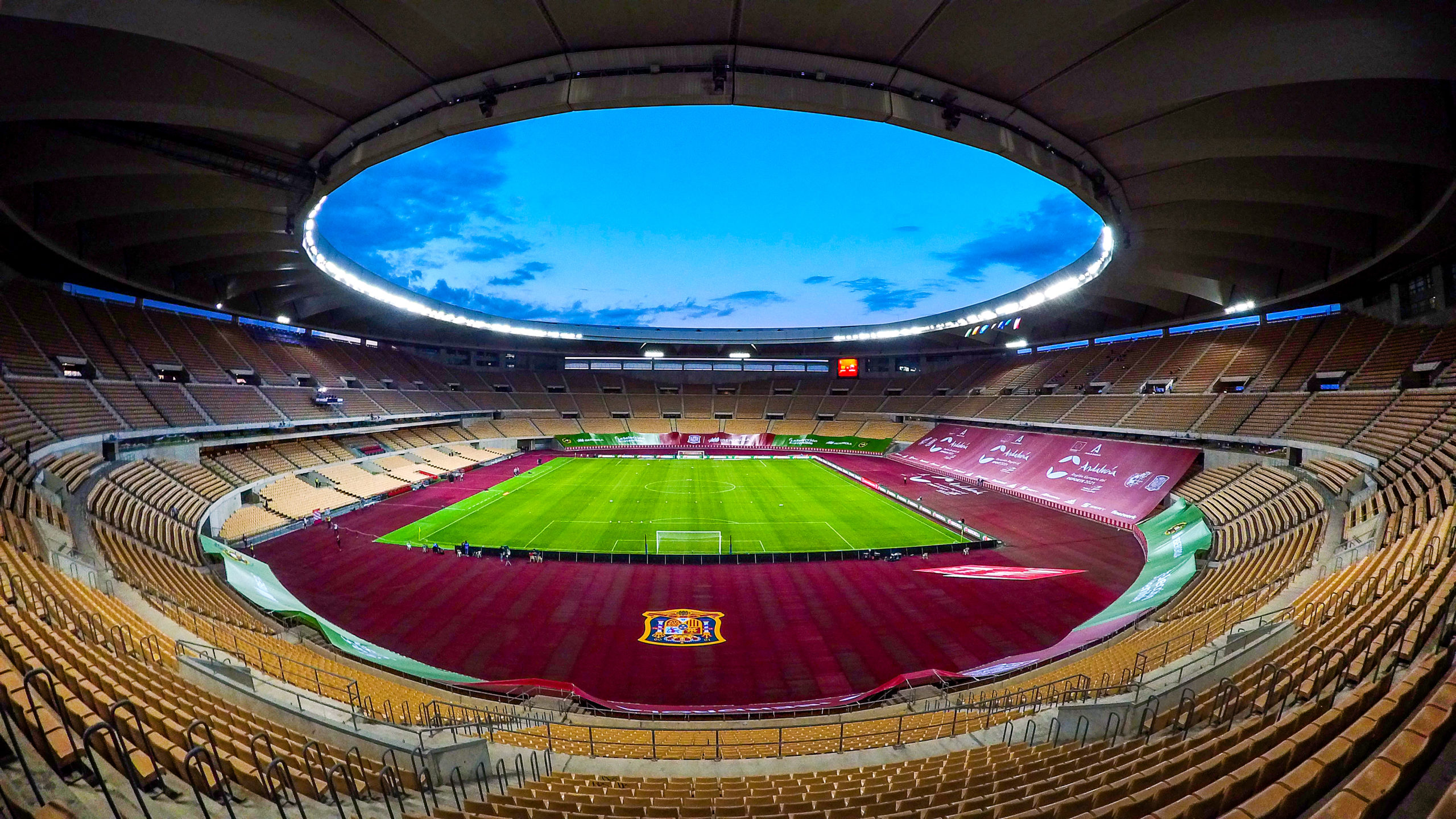Estadio De La Cartuja - Seville's Big Venue
When you think of Seville, you probably picture amazing history, beautiful buildings, and perhaps some lively culture. But there’s another spot that holds a lot of excitement, a place where big events happen, and it’s right there on Isla de la Cartuja. We're talking about Estadio de la Cartuja, a venue that has really seen so much action and is pretty central to the city's event scene.
This stadium, you see, isn't just for one thing. It's a place that has welcomed all sorts of happenings, from intense sports matches to big music shows. It has changed quite a bit over the years, always finding new ways to be a hub for people coming together, which is kind of cool, really.
And the story of Estadio de la Cartuja is still being written. With plans for even bigger things ahead, it continues to be a really important spot for both local folks and visitors who come to experience something special. It's more than just a structure; it's a place where memories are made, actually.
- %D1%83%D0%BA%D1%80%D1%83%D0%BA%D1%80%D0%B0%D1%97%D0%BD%D1%81%D1%8C%D0%BA%D0%B0 %D0%BF%D1%80%D0%B0%D0%B2%D0%B4%D0%B0
- R34 Sonic
- Chelsie Deville Nude
- Milb Transactions
- Kirstentoosweet Onlyfans Leaked
Table of Contents
- What is Estadio de la Cartuja?
- How Did Estadio de la Cartuja Begin?
- What Happens at Estadio de la Cartuja Now?
- What's Next for Estadio de la Cartuja?
What is Estadio de la Cartuja?
So, you might be wondering just what this place is all about. Estadio de la Cartuja, as it's known today, used to go by a slightly different name, Estadio Olímpico de Sevilla. But its official full name is Estadio la Cartuja de Sevilla. It’s a big spot, really, that sits on an island called Isla de la Cartuja, right there in Seville, a city in Spain. People often just call it 'La Cartuja' for short, which is pretty common for places like this, you know.
This big structure is used for many things, but it sees a lot of football matches. It's a place where teams come to play, and fans gather to cheer. It's actually a very important part of the sports scene in that part of the world, and it has quite a history tied to it, too.
Estadio de la Cartuja - Where You Find It
The location of Estadio de la Cartuja is quite interesting. It’s on Isla de la Cartuja, which is where the Monasterio de la Cartuja is found. That monastery, by the way, is where the stadium gets its name. It’s also right next to where the Seville Universal Exposition of 1992 took place. That whole area, you see, has since been turned into a scientific and technology park, which is pretty cool.
A good portion of the land this stadium sits on, about 57 percent of it, is actually part of the nearby town of Santiponce. So, while it feels like a part of Seville, it has connections to a neighboring community too. It’s a rather unique setup, if you think about it, making the Estadio de la Cartuja a bit of a landmark for both areas.
How Did Estadio de la Cartuja Begin?
Every big place has a beginning, and Estadio de la Cartuja is no different. This structure was put together in 1997, which means it’s been around for a good while now. Its doors first opened to the public on May 5, 1999. That day was quite a big deal, as the King of Spain at the time, Juan Carlos I, was there to mark the occasion. It was all set for the 1999 World Athletics Championships, which tells you a bit about its original purpose, doesn't it?
The folks who designed this place were Antonio Cruz Villalón and Antonio Ortiz García. They had a specific vision for it, and part of that vision was to make it suitable for a very big event. It was actually given the name Estadio Olímpico, or Olympic Stadium, because it was built with the idea of hosting the 2004 Olympic Games in mind. Seville had put in a bid for those games, so the stadium was made to meet the standards set by the International Olympic Committee, which is quite something, really.
Estadio de la Cartuja - A Look at Its Early Days
When Estadio de la Cartuja first opened, it could hold a good number of people. It had an initial capacity for 57,600 spectators. That’s a lot of seats, you know, for all those who wanted to come and watch events. It was a very modern place from the start, with a plan to offer many different services.
The original idea for Estadio de la Cartuja was to create a new, contemporary venue with a wide range of things for visitors. This included places to eat, special boxes for viewing, VIP seats, rooms for gatherings, a hotel, indoor parking spots, and even areas for shops and offices. It was clear, even then, that this was meant to be more than just a place for sports; it was going to be a hub for many activities, which, in some respects, it has become.
What Happens at Estadio de la Cartuja Now?
Today, Estadio de la Cartuja is a very busy place. It’s known for being a modern and adaptable venue that has hosted a mix of happenings. While football is a big part of what goes on there, it has also welcomed tennis matches and many music events. The Spain national football team, for instance, uses Estadio de la Cartuja as their home ground, which is a pretty big deal for the country's football fans, as a matter of fact.
The stadium has also seen some updates to its seating. It had a capacity of 57,619 visitors for events, but it has since grown. The capacity has gone up to 70,000 seats after some recent work, making it even bigger. This makes it one of the largest stadiums in Spain, sitting as the third biggest after Barcelona’s Camp Nou and Madrid’s Santiago Bernabéu, which is quite impressive, honestly.
Estadio de la Cartuja - More Than Just Sports
Estadio de la Cartuja has really turned into a business center that can handle many different kinds of activities. It has more than 25,000 square meters of space that hold a four-star hotel, called “Hotel Isla Cartuja.” There's also a Diaverum clinic there, and the first official CrossFit center in Andalusia, named “CrossFit La Forja.” You’ll find offices for many different companies, and places to eat as well. It’s a place that really serves many purposes beyond just big events, you know.
For instance, the stadium was recently getting ready for a big football match, the Copa del Rey final, which was set to feature Barcelona and Real Madrid on April 26. Reports showed that nearly all the seats in the new lower section were put in place, showing how much work goes into keeping the stadium ready for major events. It’s clear that Estadio de la Cartuja is a fantastic spot, and it keeps getting better, basically.
What's Next for Estadio de la Cartuja?
The future looks quite exciting for Estadio de la Cartuja. There are plans to make it even bigger, with an expansion that will bring its seating capacity up to 75,000 seats. This is a significant jump and shows how important the stadium is becoming on a global scale. This bigger size is needed because the stadium is going to host matches for the 2030 World Cup, which Spain will share with Morocco. That’s a pretty huge event to be a part of, so, you know, the preparations are quite serious.
Both the city council of Seville and the government of Andalusia have made decisions about the changes around Estadio de la Cartuja, showing a real commitment to its continued growth and importance. It’s a place that is always looking forward, always preparing for the next big thing. It’s quite a dynamic environment, actually, for a stadium.
Estadio de la Cartuja - Getting Bigger for the Future
If you're thinking of visiting Estadio de la Cartuja, it’s good to know that getting there is pretty straightforward. You can reach it by public transport, or if you prefer a walk, it’s possible to get there on foot from the historic center of Seville. This makes it very accessible for anyone who wants to catch an event or just see the place for themselves, which is a nice touch, really.
The stadium’s ability to hold such a large number of people means it can welcome some of the biggest events in the world. Its role in the upcoming World Cup is a clear sign of its growing status. Estadio de la Cartuja continues to be a central point for sports and other large gatherings in Seville, and it seems like it will keep that role for a long time to come. It’s a place that truly stands out, you know, in the city’s event scene.
This article has explored Estadio de la Cartuja, covering its location on Isla de la Cartuja in Seville, its history from its construction in 1997 and opening in 1999, and its original purpose for the 1999 World Athletics Championships and the failed 2004 Olympic bid. We've also looked at its current status as a multi-use venue for football, tennis, and music, serving as the home for the Spain national football team. The article detailed its transformation into a business hub with various facilities like a hotel and clinics, and its recent capacity increases to 70,000 seats. Finally, it touched on its future plans for expansion to 75,000 seats to host 2030 World Cup matches and its accessibility from Seville's city center.

Estadio La Cartuja renovation - TFC Stadiums

Design: Estadio La Cartuja – StadiumDB.com

Estadio La Cartuja - eventoplus.com